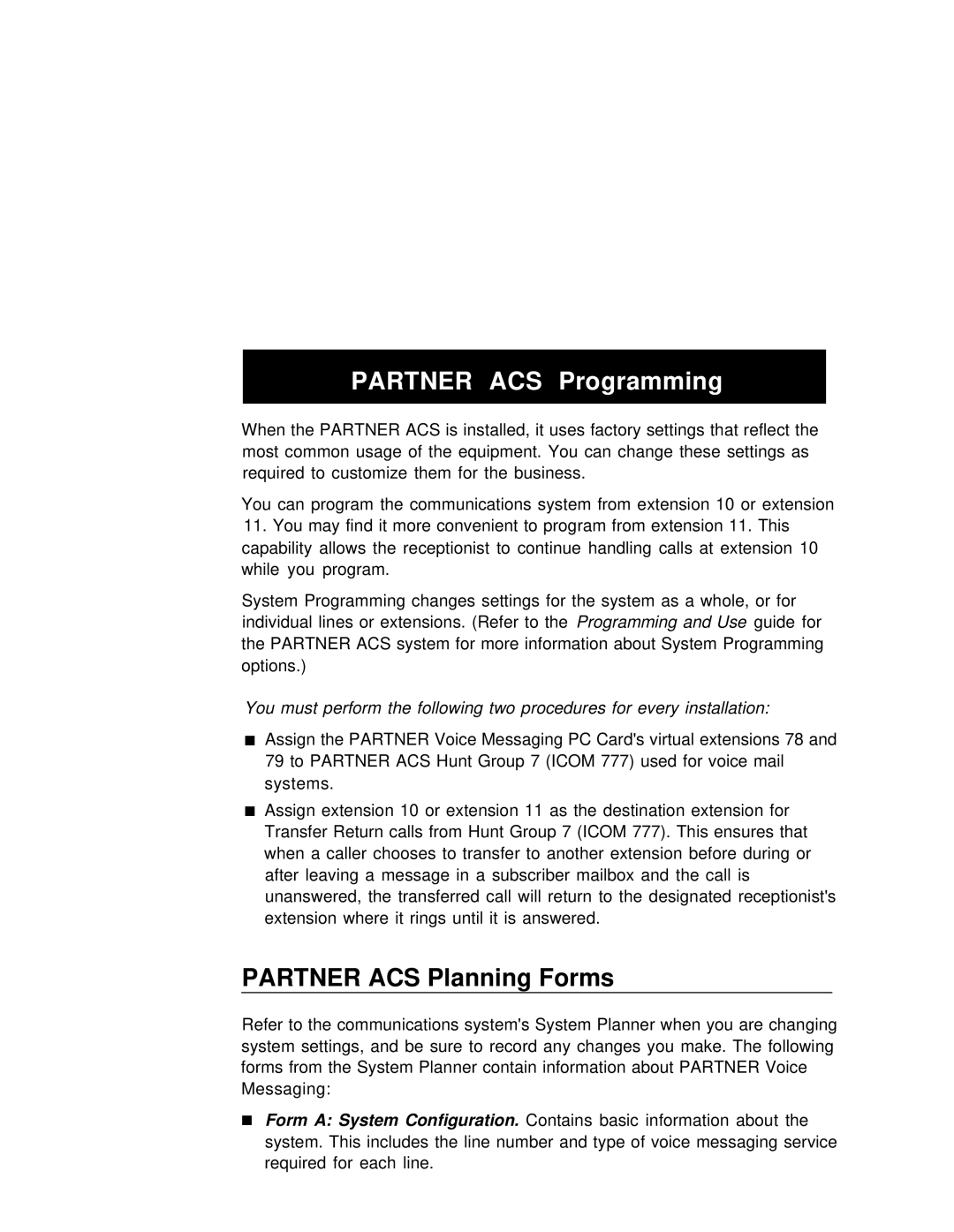
PARTNER ACS Programming
When the PARTNER ACS is installed, it uses factory settings that reflect the most common usage of the equipment. You can change these settings as required to customize them for the business.
You can program the communications system from extension 10 or extension
11.You may find it more convenient to program from extension 11. This capability allows the receptionist to continue handling calls at extension 10 while you program.
System Programming changes settings for the system as a whole, or for individual lines or extensions. (Refer to the Programming and Use guide for the PARTNER ACS system for more information about System Programming options.)
You must perform the following two procedures for every installation:
■Assign the PARTNER Voice Messaging PC Card's virtual extensions 78 and 79 to PARTNER ACS Hunt Group 7 (ICOM 777) used for voice mail systems.
■Assign extension 10 or extension 11 as the destination extension for Transfer Return calls from Hunt Group 7 (ICOM 777). This ensures that when a caller chooses to transfer to another extension before during or after leaving a message in a subscriber mailbox and the call is unanswered, the transferred call will return to the designated receptionist's extension where it rings until it is answered.
PARTNER ACS Planning Forms
Refer to the communications system's System Planner when you are changing system settings, and be sure to record any changes you make. The following forms from the System Planner contain information about PARTNER Voice Messaging:
■Form A: System Configuration. Contains basic information about the system. This includes the line number and type of voice messaging service required for each line.
